Surveillance

Our Surveillance Rackmount Servers are for physical security applications. These systems are cost effective, and provide the best security performance for your needs.
Our Surveillance Servers consist of three main system types, as follows:
- eRacks/DVR (Digital Video Recorder)
- eRacks/NVR (Network Video Recorder)
- eRacks/HVR (Hybrid Video Recorder)
eRacks/DVR (Digital Video Recorder)
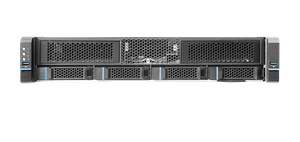 eRacks/DVR is primarily for standard analog security cameras system, like HD AHD cameras, HD TVI cameras and HD CVI cameras. A Digital Video Recorder (DVR) is used to record video footage in a digital format to a hard disk drive (HDD). It captures video/images through coaxial cables from analog cameras. Although not every camera works with any given DVR, typically any camera with a coaxial output will be at least somewhat compatible. The previously mentioned types of security cameras are typically more compatible. Standard HD AHD cameras are intended to be paired with standard AHD DVRs just as HD-TVI and HD-CVI cameras are intended to be paired with their corresponding TVI DVR and CVI DVR. This combination is more cost effective and easier to setup. Resolution is typically Standard HD - D1 (720×480). In normal usage, analog cameras cannot be more than 700-1000 feet away from the DVR without visible degradation in video quality.
eRacks/DVR is primarily for standard analog security cameras system, like HD AHD cameras, HD TVI cameras and HD CVI cameras. A Digital Video Recorder (DVR) is used to record video footage in a digital format to a hard disk drive (HDD). It captures video/images through coaxial cables from analog cameras. Although not every camera works with any given DVR, typically any camera with a coaxial output will be at least somewhat compatible. The previously mentioned types of security cameras are typically more compatible. Standard HD AHD cameras are intended to be paired with standard AHD DVRs just as HD-TVI and HD-CVI cameras are intended to be paired with their corresponding TVI DVR and CVI DVR. This combination is more cost effective and easier to setup. Resolution is typically Standard HD - D1 (720×480). In normal usage, analog cameras cannot be more than 700-1000 feet away from the DVR without visible degradation in video quality.
eRacks/NVR (Network Video Recorder)
 The NVR is for use with with IP/network security cameras. There are two different kinds of network video recorder, but don’t worry, they’re both still used with IP cameras. The first type, and much more common, requires that you connect your IP cameras to your router or a switch. This will mean using the search function on the NVR to “ping” the cameras and then add them to the NVRs device list to begin viewing. While this is not a very complicated step, it may be one you don’t feel like taking.
The NVR is for use with with IP/network security cameras. There are two different kinds of network video recorder, but don’t worry, they’re both still used with IP cameras. The first type, and much more common, requires that you connect your IP cameras to your router or a switch. This will mean using the search function on the NVR to “ping” the cameras and then add them to the NVRs device list to begin viewing. While this is not a very complicated step, it may be one you don’t feel like taking.
In that case, the second option is to go with an NVR that has built in network or PoE (power over Ethernet) ports. This will allow you to connect your IP cameras directly to the back of your NVR just as you would with a DVR. This will remove the step of having to add them manually to a device list, and it will remove all worries of ensuring that they are connected to your network properly.
eRacks/HVR (Hybrid Video Recorder)
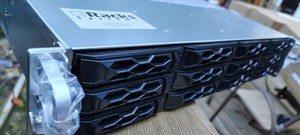 The Hybrid recorder is quickly growing in popularity because of it’s versatility. Hybrid video recorders (HVR) are compatible with both standard analog signal and digital signal. Here need to change the channel types as the user needs, what we mean is that an 8 channel HVR can be 4ch analog signal and 4ch digital signal, namely can put 4pcs AHD / TVI / Analog / CVI cameras and 4pcs IP cameras.
The Hybrid recorder is quickly growing in popularity because of it’s versatility. Hybrid video recorders (HVR) are compatible with both standard analog signal and digital signal. Here need to change the channel types as the user needs, what we mean is that an 8 channel HVR can be 4ch analog signal and 4ch digital signal, namely can put 4pcs AHD / TVI / Analog / CVI cameras and 4pcs IP cameras.
Now it’s not just the fact that you get a lot for what you pay for that makes them so attractive to consumers. Since here for the HVR you can connect perfectly acceptable AHD / CVI/ TVI/ Analog channels also the IP cameras.
It’ll only be a matter of replacing the cameras instead of a DVR and all of your cable. Depending on the size of your system, this can save you thousands of dollars on the upgrade.
So, to sum up, as MVTEAM has the 5 in 1 Hybrid DVRs, can connect with the Analog camera, AHD cameras, CVI cameras, TVI cameras and IP cameras, if the customers have kinds of above cameras, then the Hybrid would be great option for saving the cost. But just have the IP cameras, then the NVR will be better.
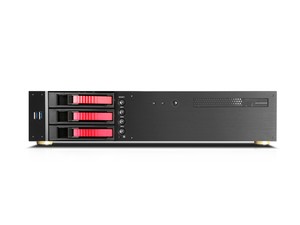
eRacks/DVR
The eRacks/DVR is one of the best performing security systems out there. We now offer surveillance storage devices along with optimization for digital video recording and viewing. So, what are you waiting for? Get your eRacks/DVR today and throw all your tension away!
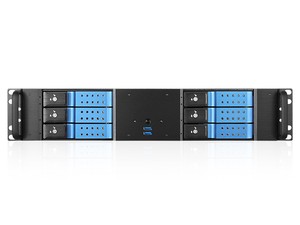
eRacks/NVR
eRacks/NVR is a Network Video Recorder, a specialized hardware and software solution used in IP video surveillance systems - it records and stores video footage for subsequent playback. eRacks/NVR works with IP-based cameras - IP cameras can capture and process video and audio data themselves, either via ethernet cable connection or wirelessly via an existing Wi-Fi network.
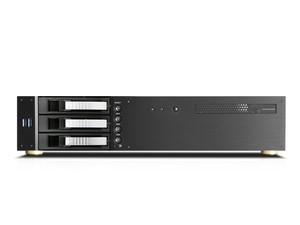
eRacks/HVR
Supercharge your analogue security system with eRacks/HVR technology for High-Definition images over your existing coax infrastructure. Ideal for companies that don’t want to make the full switch to IP just yet, while offering the benefits of a more effective system that will ease the transition when the time is right.
 via eMail
via eMail
 via Telegram
via Telegram
 via WhatsApp
via WhatsApp
 via Facebook Messenger
via Facebook Messenger
 via Signal
via Signal
 via Telephone (with Voicemail)
via Telephone (with Voicemail)
 eRacks Open Source Systems
eRacks Open Source Systems